There’s a scene in the 1973 movie Soylent Green where food shortages cause people to riot in the street, and the throng becomes so unruly that front-loading construction machines roll in and begin shoveling people up into big metal buckets. These people are hungry—no, ravenous—for a food called soylent green. But here’s the twist: They know that they love soylent green, but they have no clue what it’s made from.
Sound familiar? It should. That’s basically how we eat today. Okay, we’re not rioting in the streets, but it’s rare that we fully understand what’s in the food we’re eating. Pick up a random package in the supermarket and look at the ingredient list. Chances are you won’t know half the ingredients. Of course, Soylent Green is just a movie, and we eventually learn that the food that people are rioting for is made from dead humans.
Fortunately, no food company has yet to put the deceased into our Cornflakes or Pop-Tarts, but that doesn’t mean we’re completely safe from the dangers of mystery. Take a look at the gross, disturbing, and downright frightening facts Eat This, Not That! 2012 has uncovered. You may never look at food the same way.
1. Your food can legally contain maggots, rodent hair, and insect eggs.
The FDA allows certain “defects” to slide by. Have a look at what your food can carry:
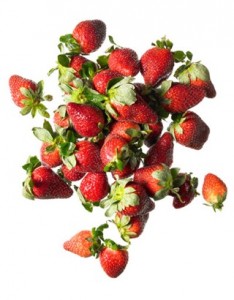 Canned pineapple can pack in up to 20% moldy fruit.
Canned pineapple can pack in up to 20% moldy fruit.- Berries can harbor up to 4 larvae per 100 grams.
- Oregano can legally contain up to 1,250 insect fragments per 10 grams.
- Cinnamon can carry up to 1 milligram of animal excrement per pound.
- Ocean perch can harbor small numbers of copepods, parasites that create pus pockets.
2. Nutritious food costs 10 times as much as junk food.
 University of Washington researchers calculated the cost discrepancy between healthy food and junk foods and found that 2,000 calories of junk food rings up at a measly $3.52 a day. Yet for 2,000 calories of nutritious grub, the researchers plunked down $36. To add insult to fiscal injury, out of every dollar you spend on food, only 19 cents goes toward the stuff you eat. The other 81 percent goes toward marketing, manufacturing, and packaging. Think about that the next time your grocery bill jumps into triple-digit dollars.
University of Washington researchers calculated the cost discrepancy between healthy food and junk foods and found that 2,000 calories of junk food rings up at a measly $3.52 a day. Yet for 2,000 calories of nutritious grub, the researchers plunked down $36. To add insult to fiscal injury, out of every dollar you spend on food, only 19 cents goes toward the stuff you eat. The other 81 percent goes toward marketing, manufacturing, and packaging. Think about that the next time your grocery bill jumps into triple-digit dollars.
3. Grocers don’t have to tell you where your salad comes from.
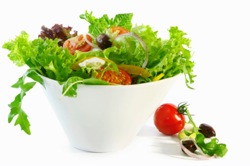 With fresh fruits and vegetables, supermarkets must tell you the country of origin, but with dried fruit and mixed produce, the law isn’t so strict. That means a mixed bag of salads isn’t required to disclose its location, and that can create problems if there’s a bacterial outbreak. News reports might warn you about E. Coli-tainted spinach coming from a certain country, but if your spinach is packaged with other greens, you’ll have no way of knowing if it’s in your bag. That’s a huge problem considering leafy greens top the CDC’s list of foods most commonly associated with food borne illness.
With fresh fruits and vegetables, supermarkets must tell you the country of origin, but with dried fruit and mixed produce, the law isn’t so strict. That means a mixed bag of salads isn’t required to disclose its location, and that can create problems if there’s a bacterial outbreak. News reports might warn you about E. Coli-tainted spinach coming from a certain country, but if your spinach is packaged with other greens, you’ll have no way of knowing if it’s in your bag. That’s a huge problem considering leafy greens top the CDC’s list of foods most commonly associated with food borne illness.
4. Fruits and vegetables are losing their nutrients.
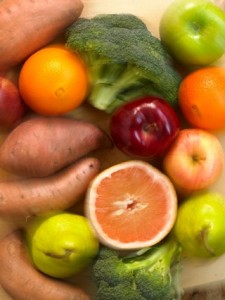 According to the USDA, the fruits and vegetables we eat today may contain significantly fewer nutrients than those our grandparents ate. Researchers looked at 43 produce items and discovered drops in protein (6 percent), calcium (16 percent), iron (15 percent), riboflavin (38 percent), and vitamin C (20 percent). Your move: Eat more fruits and vegetables.
According to the USDA, the fruits and vegetables we eat today may contain significantly fewer nutrients than those our grandparents ate. Researchers looked at 43 produce items and discovered drops in protein (6 percent), calcium (16 percent), iron (15 percent), riboflavin (38 percent), and vitamin C (20 percent). Your move: Eat more fruits and vegetables.
5. Calorie counts on nutrition fact labels aren’t accurate.
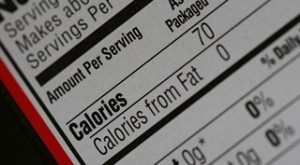 Researchers at Tufts University recently analyzed 269 food items from 42 national sit-down and fast-food restaurant chains, and they found that nearly 20 percent of samples contained 100 or more calories than reported by the restaurants. Think about it like this: If every meal you eat has 100 more calories than you need, you’ll gain more than 30 pounds this year.
Researchers at Tufts University recently analyzed 269 food items from 42 national sit-down and fast-food restaurant chains, and they found that nearly 20 percent of samples contained 100 or more calories than reported by the restaurants. Think about it like this: If every meal you eat has 100 more calories than you need, you’ll gain more than 30 pounds this year.
6. Chicken today contains 266 percent more fat than it did 40 years ago.
 What’s more, today’s chicken also has 33 percent less protein, according to a study from the Institute of Brain Chemistry and Human Nutrition at London Metropolitan University. The problem is modern farming practices. Cramped environments and unnatural diets produce birds that have the same weight problems as the humans who eat them.
What’s more, today’s chicken also has 33 percent less protein, according to a study from the Institute of Brain Chemistry and Human Nutrition at London Metropolitan University. The problem is modern farming practices. Cramped environments and unnatural diets produce birds that have the same weight problems as the humans who eat them.
7. Milk contains hormones that may cause cancer.
 In 1970, a typical dairy cow could produce about 10,000 pounds of milk per year. Today, that same cow produces roughly 20,000 pounds. So did cows change? Nope. It’s their feed that’s different. Today’s cows are routinely fed a hormone called recombinant bovine somatotropin, or rBST. Problem is, studies have linked rBST to a multitude of cancers, including those of the prostate, breast, and colon. And while milk from rBST-treated cows is ubiquitous in America’s supermarkets, some of the biggest players are getting wise. Stores like Whole Foods, Wal-Mart, and Kroger only carry rBST-free dairy.
In 1970, a typical dairy cow could produce about 10,000 pounds of milk per year. Today, that same cow produces roughly 20,000 pounds. So did cows change? Nope. It’s their feed that’s different. Today’s cows are routinely fed a hormone called recombinant bovine somatotropin, or rBST. Problem is, studies have linked rBST to a multitude of cancers, including those of the prostate, breast, and colon. And while milk from rBST-treated cows is ubiquitous in America’s supermarkets, some of the biggest players are getting wise. Stores like Whole Foods, Wal-Mart, and Kroger only carry rBST-free dairy.
8. Conventional supermarket peaches can be coated with as many as nine different pesticides.
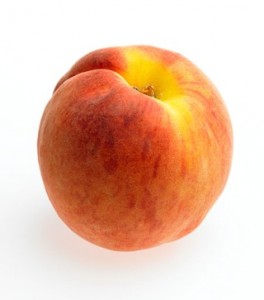 Because peaches are prone to bruising, blemishing, and insect takeover, they’re routinely soaked in chemicals in the weeks before being shipped off to the supermarket. That’s why the Environmental Working Group rates peaches among the dirtiest conventional fruits in America. Also on that list: apples, celery, strawberries, and spinach. As a general rule, unless the produce has a thick, impermeable skin, assume it’s soaked in pesticides. Now wash it with water and mild soap before you eat it.
Because peaches are prone to bruising, blemishing, and insect takeover, they’re routinely soaked in chemicals in the weeks before being shipped off to the supermarket. That’s why the Environmental Working Group rates peaches among the dirtiest conventional fruits in America. Also on that list: apples, celery, strawberries, and spinach. As a general rule, unless the produce has a thick, impermeable skin, assume it’s soaked in pesticides. Now wash it with water and mild soap before you eat it.
9. You’re probably eating trans fat without knowing it.
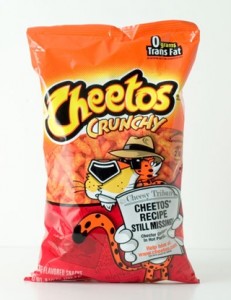 Slack FDA regulations allow food processors to claim zero trans fats even if the food contains .49 grams. To be clear, that’s .49 grams per serving. That means by the time you finish, say, an entire bag of Cheetos, you might be ingesting nearly 5 grams of trans fat. Sure the bag says “0 GRAMS TRANS FAT” right on the front, but if you look at the ingredient statement, you’ll see partially hydrogenated oil, the primary source of trans fat.
Slack FDA regulations allow food processors to claim zero trans fats even if the food contains .49 grams. To be clear, that’s .49 grams per serving. That means by the time you finish, say, an entire bag of Cheetos, you might be ingesting nearly 5 grams of trans fat. Sure the bag says “0 GRAMS TRANS FAT” right on the front, but if you look at the ingredient statement, you’ll see partially hydrogenated oil, the primary source of trans fat.
10. The number of daily calories available to each American has increased by 500 over the last 40 years.
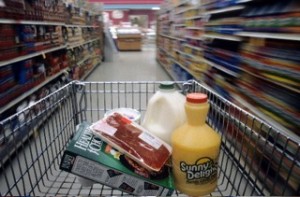 USDA data shows that the food industry supplies 2,700 calories to every man, woman and child in America. In 1970, that number was 2,200. That increase translates into 52 extra pounds of fat per person, per year.
USDA data shows that the food industry supplies 2,700 calories to every man, woman and child in America. In 1970, that number was 2,200. That increase translates into 52 extra pounds of fat per person, per year.
11. Commonly used food dyes can alter your kids’ behavior.
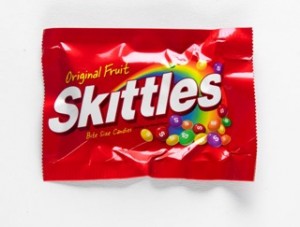 Researchers at the University of Southampton found that colors such as Yellow #5, Yellow #6, and Red #40 could cause hyperactivity in children. Ironically, foods marketed to children are often the most heavily dyed foods in the supermarket.
Researchers at the University of Southampton found that colors such as Yellow #5, Yellow #6, and Red #40 could cause hyperactivity in children. Ironically, foods marketed to children are often the most heavily dyed foods in the supermarket.
12. Your stomach bug is likely food poisoning.
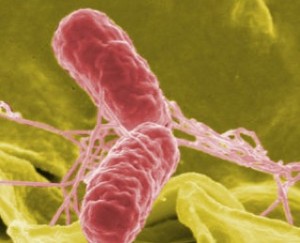 The Centers for Disease Control and Prevention estimates that every year, 48,000 Americans receives food poisoning from contaminated food, and that puts a $152 billion strain on the economy. What’s worse, an astonishing 3,000 of those people die. Where’s the problem? Click ahead to find out.
The Centers for Disease Control and Prevention estimates that every year, 48,000 Americans receives food poisoning from contaminated food, and that puts a $152 billion strain on the economy. What’s worse, an astonishing 3,000 of those people die. Where’s the problem? Click ahead to find out.
13. Forty-two percent of raw supermarket chicken is contaminated.
 In a study by Consumers Union, the driving force behind Consumer Reports, 12 percent of tested chickens were infected with Salmonella, and nearly half carried Campylobacter. Campylobacteriosis is one of the most common causes of food poisoning in America.
In a study by Consumers Union, the driving force behind Consumer Reports, 12 percent of tested chickens were infected with Salmonella, and nearly half carried Campylobacter. Campylobacteriosis is one of the most common causes of food poisoning in America.
14. Gulf Coast oysters carry E. coli.
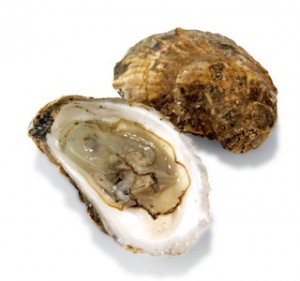 When researchers from Arizona tested Gulf Shore oysters, they found E. coli in every single sample. As filter-feeders, oysters naturally sift through the pollutants in the water, increasing their risk of contamination by pathogens. If you’re buying oysters from anything less than a highly trusted source, make sure you cook them through.
When researchers from Arizona tested Gulf Shore oysters, they found E. coli in every single sample. As filter-feeders, oysters naturally sift through the pollutants in the water, increasing their risk of contamination by pathogens. If you’re buying oysters from anything less than a highly trusted source, make sure you cook them through.
15. The USDA is allowing your meat to be “cleaned” with ammonia—and they’re hiding it from you.
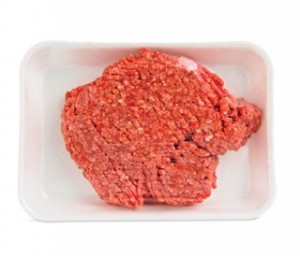 The typical fast-food burger is made with slaughterhouse trimmings, fatty cuts of beef typically reserved for pet food and cooking oil. What’s more, these burgers contain pieces of hundreds, potentially even thousands, of different cows. This creates an environment where bacteria thrive, so to clean the meat, the USDA allows a company called Beef Products to pipe the raw beef through pipes and expose it to ammonia gas. Never mind that ammonia is a poison or that evidence suggests the process may not be fully effective. The USDA deems it safe enough, and it allows the meat to be sold without any indication that it received the gas treatment.
The typical fast-food burger is made with slaughterhouse trimmings, fatty cuts of beef typically reserved for pet food and cooking oil. What’s more, these burgers contain pieces of hundreds, potentially even thousands, of different cows. This creates an environment where bacteria thrive, so to clean the meat, the USDA allows a company called Beef Products to pipe the raw beef through pipes and expose it to ammonia gas. Never mind that ammonia is a poison or that evidence suggests the process may not be fully effective. The USDA deems it safe enough, and it allows the meat to be sold without any indication that it received the gas treatment.
16. Aluminum cans are lined with a hormone-disrupting toxin.
 Bisphenol A, or BPA, is the chemical found in plastic bottles, glass jar lids, and the lining of food-containing tins and cans. In your body, BPA acts similar to estrogen, and it has been linked to behavioral problems, reproductive issues, and obesity. The industry has been slow to find a replacement, so limit exposure by switching to glass containers or plastic bottles labeled BPA-free.
Bisphenol A, or BPA, is the chemical found in plastic bottles, glass jar lids, and the lining of food-containing tins and cans. In your body, BPA acts similar to estrogen, and it has been linked to behavioral problems, reproductive issues, and obesity. The industry has been slow to find a replacement, so limit exposure by switching to glass containers or plastic bottles labeled BPA-free.
17. Roughly two-thirds of bottled water doesn’t comply with FDA standards.
 When the Food and Drug Administration set bottled-water regulations, it left in one gaping loophole: The regulations apply only to bottled waters sold across state or country borders. Bottles packaged and sold within a single state don’t have to comply with national standards. Although many states do have their own set of (nationally unregulated and unrecognized) regulations in place, one in five have none. Furthermore, government and industry estimates figure that 25 percent of water bottles sold in the US contain mere tap water. You should be so lucky as to end up with one of those; the FDA’s rules are far more lax than the tap water standards set by the EPA.
When the Food and Drug Administration set bottled-water regulations, it left in one gaping loophole: The regulations apply only to bottled waters sold across state or country borders. Bottles packaged and sold within a single state don’t have to comply with national standards. Although many states do have their own set of (nationally unregulated and unrecognized) regulations in place, one in five have none. Furthermore, government and industry estimates figure that 25 percent of water bottles sold in the US contain mere tap water. You should be so lucky as to end up with one of those; the FDA’s rules are far more lax than the tap water standards set by the EPA.
18. We drink twice as many calories today as we did 30 years ago.
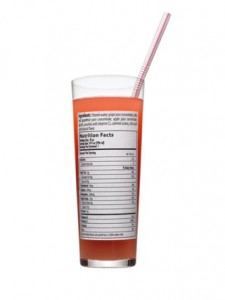 The average American drinks 450 liquid calories every day, according to a study from the University of North Carolina. And booze isn’t the problem. Blame the bigger bottles of soda, the sugar-loaded coffee drinks, and the barrel-sized smoothies.
The average American drinks 450 liquid calories every day, according to a study from the University of North Carolina. And booze isn’t the problem. Blame the bigger bottles of soda, the sugar-loaded coffee drinks, and the barrel-sized smoothies.
19. Fast food signs alter your behavior
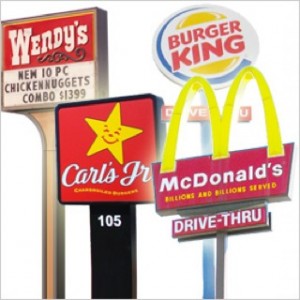 A study published last year in Psychological Science reveals that the mere sight of a fast-food sign on the side of the road is enough to make people feel rushed, which can lead to impulsive decisions—and dangerous nutritional choices. Sidestep your impulses the next time you eat out: Plan your order before you walk through the door and then stick with it.
A study published last year in Psychological Science reveals that the mere sight of a fast-food sign on the side of the road is enough to make people feel rushed, which can lead to impulsive decisions—and dangerous nutritional choices. Sidestep your impulses the next time you eat out: Plan your order before you walk through the door and then stick with it.
20. There are crushed bugs in your food.
 Carmine, a vibrant red food colorant, is actually the crushed abdomen of the female Dactylopius coccus, a beetle-like African insect. Not only is the thought of eating bug juice gross, but it also poses an ethical issue for some vegetarians and vegans. Look for it in red-colored candies and juices.
Carmine, a vibrant red food colorant, is actually the crushed abdomen of the female Dactylopius coccus, a beetle-like African insect. Not only is the thought of eating bug juice gross, but it also poses an ethical issue for some vegetarians and vegans. Look for it in red-colored candies and juices.